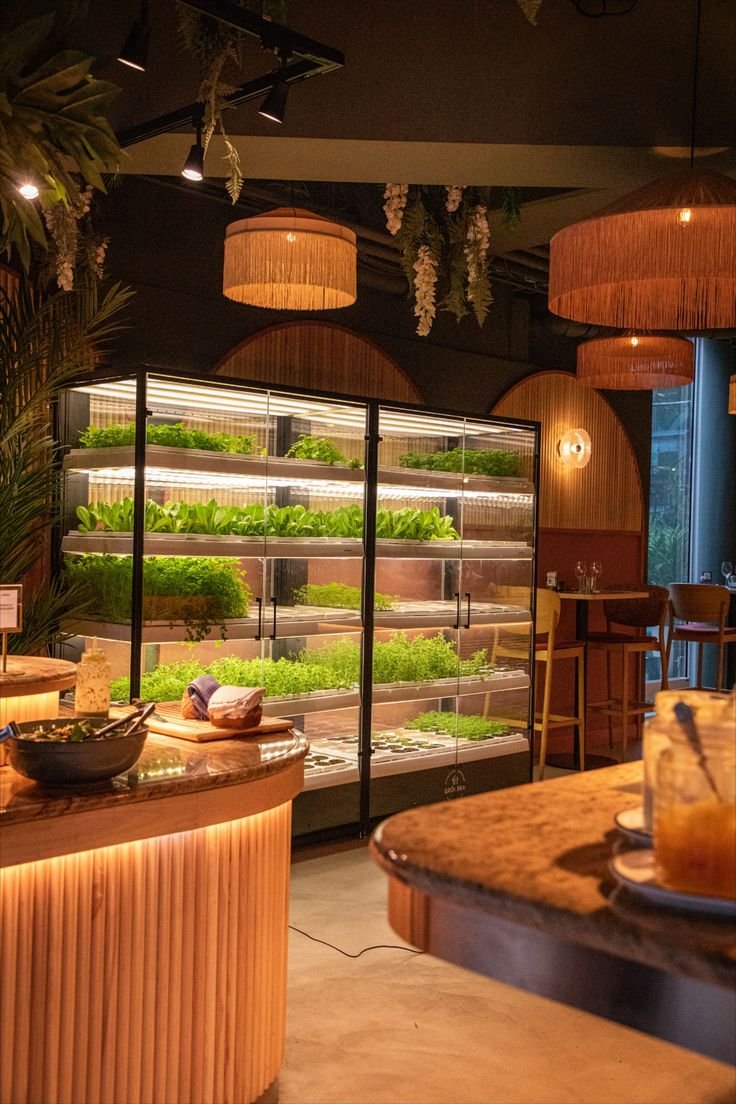Eco-Friendly Kitchen Makeover: 10 Sustainable Tips for a Greener Culinary Space

Introduction:
The kitchen, often considered the heart of the home, is a place where creativity, nourishment, and family connections come together. However, as one of the most resource-intensive spaces, it also has the potential to contribute significantly to energy consumption, waste generation, and environmental impact. The good news is that transforming your kitchen into a more sustainable space doesn’t require a complete overhaul; with the right approach, small changes can lead to big results.
In this guide, we’ll explore 10 actionable tips to help you create an eco-friendly kitchen that not only supports a sustainable lifestyle but also enhances your cooking experience. Whether you’re looking to minimize waste, save energy, or make more conscious choices about the materials you use, these tips will guide you toward a greener culinary space. Join us as we dive into the world of sustainable kitchen practices and design, where every step you take will contribute to a healthier planet and a more conscious way of living.
10 Tips for a Greener Culinary Space
1. Opt for Energy-Efficient Appliances
One of the most impactful changes you can make in your kitchen is to swap out old, energy-hungry appliances for newer, energy-efficient models. Look for appliances that are Energy Star certified, as they meet strict energy efficiency standards set by the U.S. Environmental Protection Agency (EPA). Energy-efficient refrigerators, dishwashers, ovens, and microwaves not only save you money on utility bills but also reduce your household’s carbon footprint.
When purchasing a new appliance, also consider its size. For example, purchasing a dishwasher with a smaller load capacity, rather than one that’s too large for your needs, ensures that you’re not wasting unnecessary energy to clean a few dishes.
2. Use LED Lighting to Brighten Your Kitchen
Lighting is often overlooked when it comes to sustainability, but it’s an area where you can make a substantial difference. Traditional incandescent bulbs use far more energy than LED alternatives, and they have a much shorter lifespan. LED lights consume up to 75% less energy and last 25 times longer, which reduces both waste and energy consumption.
Consider replacing your kitchen’s overhead lights, task lighting, and under-cabinet lights with energy-efficient LED options. If your kitchen has old-fashioned incandescent bulbs, making the switch to LEDs will significantly reduce your kitchen’s overall energy use.
3. Embrace Zero-Waste Cooking and Storage Practices
A zero-waste kitchen is one that focuses on reducing, reusing, and recycling as much as possible. By embracing sustainable cooking and storage habits, you can drastically cut down on food waste and packaging waste. Start by purchasing ingredients in bulk to minimize packaging and using reusable containers instead of plastic bags or single-use plastic wraps.
Incorporate more plant-based foods into your diet, as they tend to have a lower environmental impact compared to meat-heavy meals. Composting your food scraps is another essential practice in a zero-waste kitchen, helping to divert organic waste from landfills and turn it into nutrient-rich compost for your garden.
4. Choose Sustainable Cookware and Utensils
When it comes to cookware, materials matter. Choose pots, pans, and utensils made from sustainable materials like cast iron, stainless steel, and bamboo, rather than non-stick or plastic options. Non-stick cookware often contains harmful chemicals like PFOA and PFOS, which are bad for both your health and the environment.
Opting for stainless steel or cast iron, both of which are durable and long-lasting, can drastically reduce the need for replacements. These materials are also non-toxic and resistant to wear and tear, making them an eco-friendly choice for the long term.
5. Select Natural Cleaning Products for the Kitchen
Many commercial cleaning products contain harmful chemicals that can damage the environment and harm your health. Choose natural and non-toxic cleaning supplies like vinegar, baking soda, and lemon juice, which are just as effective and much safer for your kitchen.
For a greener cleaning routine, you can make your own eco-friendly all-purpose cleaners, scrubs, and disinfectants using simple ingredients. Additionally, opt for reusable cleaning cloths or microfiber towels instead of paper towels, which contribute to deforestation and waste.
6. Reduce Single-Use Plastic with Reusable Alternatives
Plastic waste is one of the biggest contributors to environmental pollution. In the kitchen, it’s easy to accumulate single-use plastic products like straws, plastic bags, and plastic wrap. To reduce your plastic consumption, switch to reusable alternatives such as silicone food storage bags, beeswax wraps, and glass containers.
Invest in a set of stainless steel or bamboo straws for your drinks, and make sure to carry your own reusable shopping bags when you go to the grocery store. Over time, these simple swaps will significantly reduce the amount of plastic waste in your kitchen.
7. Harvest Rainwater for Sustainable Gardening and Cleaning
If you’re looking to take your sustainability efforts a step further, consider setting up a rainwater harvesting system for your kitchen. Rainwater can be used for tasks like cleaning, watering plants, or even for flushing toilets, which helps conserve freshwater resources.
By collecting rainwater, you reduce the strain on your local water supply and save money on water bills. Rainwater is also a great alternative for gardening, as it’s free from chlorine and other chemicals found in tap water, making it ideal for watering your plants.
8. Opt for Sustainable Kitchen Materials
When renovating or redesigning your kitchen, be mindful of the materials you choose. Many common materials, such as plastic laminates and particleboard, are made from non-renewable resources and are difficult to recycle. Opt for sustainable materials like bamboo, reclaimed wood, and recycled glass, which have less environmental impact and can be easily recycled.
When selecting countertops, consider eco-friendly options such as recycled quartz, granite, or concrete, which are durable, non-toxic, and made from sustainable materials. Sustainable flooring options, like cork, bamboo, and recycled rubber, are also excellent choices for creating a greener kitchen.
9. Install a Water Filtration System
Reducing plastic waste from bottled water is another essential step in creating a sustainable kitchen. Instead of purchasing bottled water, consider installing a water filtration system that provides clean, purified water right from your tap. This not only reduces your environmental impact by cutting down on plastic waste but also saves you money in the long run.
There are many water filtration options to choose from, including under-sink filters, countertop models, and pitcher filters. Whichever system you choose, make sure it is designed to remove harmful contaminants while maintaining essential minerals in the water.
10. Support Local and Organic Food Producers
Lastly, supporting local and organic food producers is one of the most effective ways to create a sustainable kitchen. Organic farming practices use fewer pesticides and chemicals, making them better for the environment and for your health. Additionally, buying locally grown food reduces the carbon footprint associated with transportation, packaging, and refrigeration.
Shop at local farmers’ markets, join a community-supported agriculture (CSA) program, or choose organic products at your local grocery store. Supporting these businesses helps promote sustainable agriculture and fosters a more resilient local food economy.
Conclusion: Creating a Sustainable Culinary Space
Transforming your kitchen into an eco-friendly space is about more than just making green choices—it’s about rethinking how we interact with the environment in our everyday routines. Each of the tips we’ve discussed, from choosing energy-efficient appliances to reducing waste and opting for sustainable materials, brings us one step closer to a greener, healthier lifestyle.
By making small, manageable changes and adopting new, sustainable habits, you can significantly reduce your kitchen’s environmental impact while still creating a space that is functional, stylish, and enjoyable to work in. The key is consistency—making sustainable choices every day, whether you’re cooking, cleaning, or shopping for ingredients. With each mindful decision, you’re not only creating a more eco-friendly kitchen, but you’re also helping to protect the planet for future generations.
As you embark on your journey toward a more sustainable kitchen, remember that every change, no matter how small, contributes to a larger positive impact. Take it one step at a time, and you’ll see how simple, sustainable choices can create a greener, healthier culinary space for you and your family.





